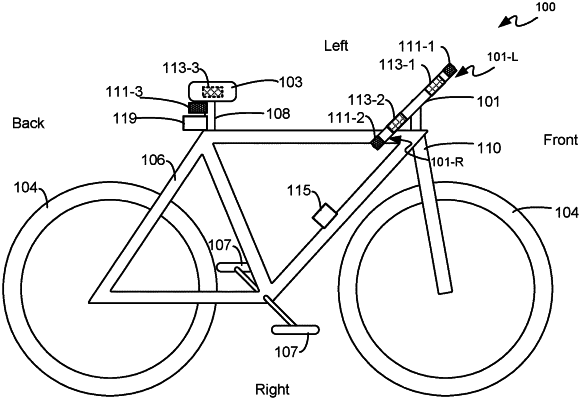| CPC B60R 11/04 (2013.01) [B62J 50/21 (2020.02); B62J 50/25 (2020.02); G06V 20/56 (2022.01); H04W 4/40 (2018.02); B60R 2300/105 (2013.01); B60R 2300/107 (2013.01); B60R 2300/301 (2013.01); B60R 2300/8066 (2013.01)] | 25 Claims |

|
1. A vehicle comprising:
handlebars;
a seat for a rider;
a long-range camera positioned to image external objects in a rear-facing direction;
a stereoscopic camera positioned to image the external objects in the rear-facing direction, the long-range camera having a focal length longer than a respective focal length of the stereoscopic camera; and
a controller in communication with the long-range camera and the stereoscopic camera, the controller in further communication with one or more notification devices, the controller configured to:
detect, using images from the long-range camera, an external object in the rear-facing direction;
in response to detecting the external object, using the images from the long-range camera, process stereoscopic images from the stereoscopic camera to determine when the external object is located within a first zone or a second zone extending in the rear-facing direction, the second zone being closer to the stereoscopic camera than the first zone;
in response to determining that the external object is located within the first zone, control the one or more notification devices to provide one or more first notifications associated with a first urgency level;
in response to determining that the external object is located within the second zone, control the one or more notification devices to provide one or more second notifications associated with a second urgency level greater than the first urgency level,
wherein the controller is further configured to one or more of:
determine, using the images from the long-range camera, a type of the external object, wherein the stereoscopic images from the stereoscopic camera are processed, or not processed, to determine when the external object is located within the first zone or the second zone, depending on the type of the external object; and
determine, using the images from the long-range camera, the type of the external object; and control a respective size of one or more of the first zone and the second zone, depending on the type of the external object.
|